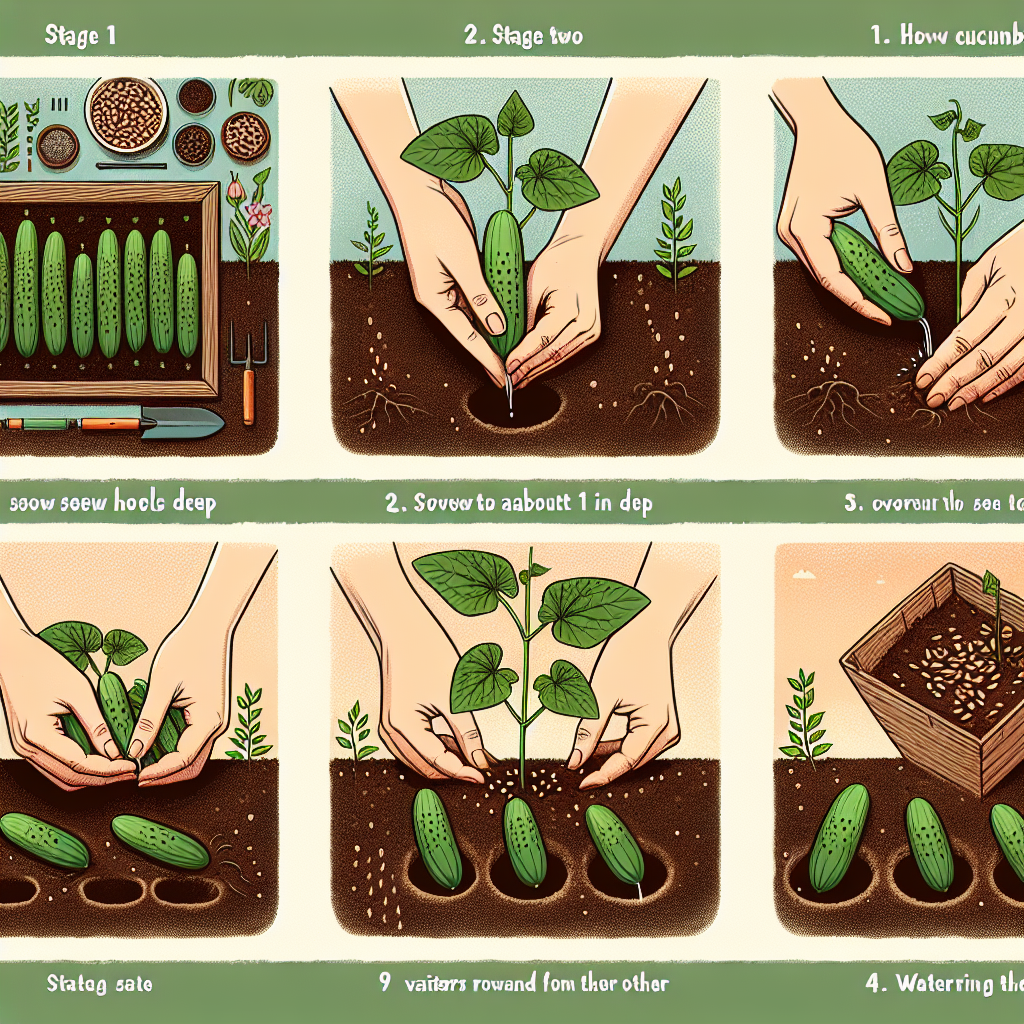
How do i plant cucumber plants
How to Successfully Plant Cucumber Plants
Cucumbers are not just refreshing additions to your summer salads; they are also relatively easy to grow. Whether you're a gardening novice or a seasoned pro, knowing how to plant cucumber plants can lead to a bountiful harvest. In this guide, we will take you through all the stages of growing cucumbers, from selecting varieties to planting techniques, care tips, and even harvesting. So, let’s dig in!
Choosing the Right Cucumber Variety
The first step in successfully planting cucumber plants is selecting the right variety. Cucumbers come in various types, and your choice can depend on your growing conditions, space, and culinary needs. Here are some common varieties you may consider:
- Pickling Cucumbers: Short and bumpy, these are great for making pickles.
- European Cucumbers: Long and thin, these are often found in supermarkets and have fewer seeds.
- Slicing Cucumbers: Rounder and sweeter than picklers, ideal for fresh eating in salads.
- Hybrid Varieties: Known for disease resistance and yield, hybrids can be both pickling and slicing types.
Consider your climate and available garden space when selecting a variety. Some cucumbers can spread rapidly and may require trellising to keep them upright and manageable.
Pre-Planting Preparations
Before you actually plant your cucumber seeds or seedlings, a few preparations can make the process smoother and more successful.
- Soil Preparation: Cucumbers thrive in well-drained, nutrient-rich soil. Aim for a pH between 6.0 and 7.0. You can mix in compost or well-rotted manure to enhance soil quality.
- Location: Choose a spot that receives at least 6-8 hours of sunlight daily. Good air circulation is also vital to prevent fungal diseases.
- Climatic Considerations: Wait until the soil temperature consistently exceeds 65°F (about 18°C) before planting outdoor seeds or transplants.
Planting Cucumber Seeds
When space and conditions permit, planting cucumber seeds directly in the garden is a popular and effective method.
“The best time to plant cucumbers is in the late spring or early summer when temperatures are warming.”
Here's how to plant cucumber seeds:
- Prepare Planting Holes: Create holes about 1 inch deep and spaced 36-42 inches apart. You can plant seeds in hills—groups of three to five seeds—spaced about 3 feet apart.
- Seed Placement: Place seeds in the hole and cover them with soil. Water lightly to ensure good seed-to-soil contact.
- Thinning: Once seedlings emerge, thin them to the strongest two or three plants per hill to avoid overcrowding.
Transplanting Seedlings
If you choose to start your cucumbers indoors, transplanting them is a careful process. Seedlings should be hardened off by gradually exposing them to outdoor conditions over a week.
Transplanting Steps:
- Timing: Ensure outdoor temperatures are consistently warm before transplanting.
- Digging Holes: Create holes that are big enough to accommodate the root system of your seedlings.
- Careful Placement: Remove seedlings gently from their containers and place them in the holes. Cover the roots and water thoroughly.
Care and Maintenance
Once you've planted your cucumber plants, proper care will ensure that they thrive and produce abundantly. Here’s what you need to focus on:
- Watering: Cucumbers require about 1 to 2 inches of water per week, especially during dry spells. Water deeply and consistently to prevent fruit from becoming bitter.
- Fertilization: Use a balanced fertilizer according to the manufacturer's instructions. Feeding every few weeks with a water-soluble fertilizer can greatly enhance growth.
- Mulching: Applying mulch helps retain moisture and suppress weeds. Organic mulches like straw or shredded leaves work well.
Pest and Disease Management
Proper management of pests and diseases is crucial for cucumber plants. Here are some common threats and how to handle them:
- Aphids: Use insecticidal soap or neem oil sprays if large populations are detected.
- Cucumber Beetles: Handpick them or set up traps. Row covers can prevent them from laying eggs in your garden.
- Powdery Mildew: Promote good air circulation around your plants and avoid overhead watering to reduce the incidence of this fungal disease.
Harvesting Cucumbers
Knowing the right time to harvest is essential for the best taste and texture. Cucumbers are usually ready to pick about 50-70 days after planting, depending on the variety.
Signs of Readiness:
- Size: Look for cucumbers that reach about 6-8 inches long for slicing types. Pickling cucumbers should be harvested when they’re about 2-4 inches.
- Color: A vibrant green color typically indicates ripeness, although some varieties may take on a slightly yellow hue.
- Firmness: A mature cucumber will be firm to the touch. If they feel soft or have wrinkles, they may be overripe.
Use a sharp knife or garden shears to cut cucumbers from the vine, being careful not to damage the plant. Regular harvesting encourages more fruit production.
Storing Your Harvest
Once you’ve harvested your cucumbers, proper storage can preserve their freshness:
- Temperature: Store cucumbers in the refrigerator, ideally at 50°F (10°C) for optimum crispness.
- Moisture: Keep them in a breathable bag to prevent moisture buildup, which can lead to spoilage.
“Harvest regularly and enjoy the fruits of your labor!”
Conclusion
Now you have a comprehensive understanding of how to plant cucumber plants successfully! From selecting the right variety and preparing the soil to planting, maintaining, and gathering the harvest—every step is essential for your veggie garden’s success.
Growing cucumbers can be incredibly rewarding, both for the fresh produce and the satisfaction that comes from nurturing your garden. Remember to stay informed about any challenges and adjust your care practices accordingly. Happy gardening!
By Guest, Published on September 17th, 2024